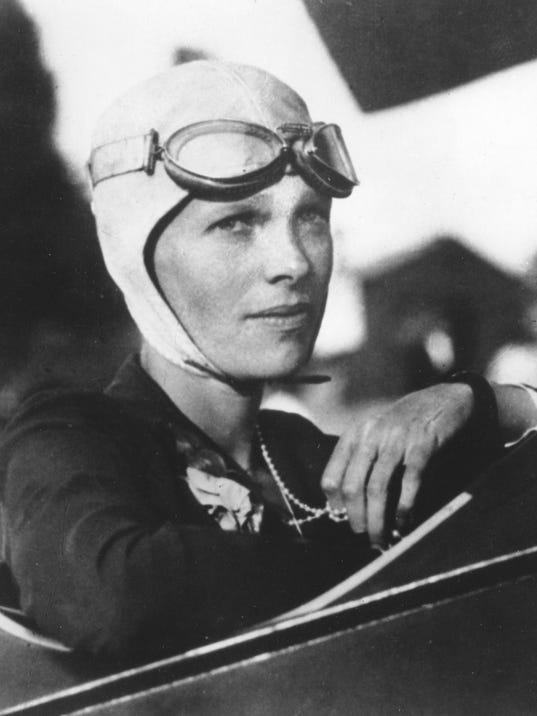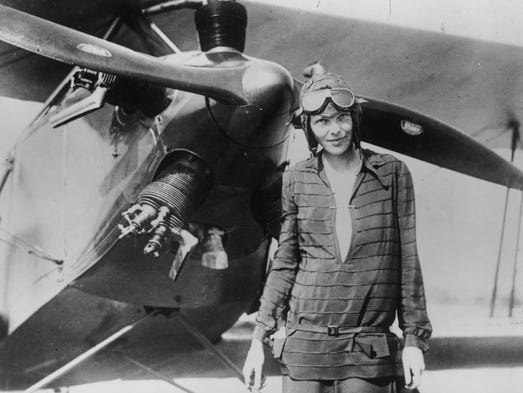
A team of explorers strongly believe they have solved a nearly 80-year-old mystery. They think they can prove what happened to Amelia Earhart, her navigator and her plane. USA TODAY
Even 80 years after her disappearance, Amelia Earhart's story has inspired a generation of new female pilots who are breaking the sky-high glass ceiling.

People are still fascinated by the mystery of Earhart's disappearance and scientists are still searching for her remains. Earhart, the first woman to fly across the Atlantic, disappeared on July 2, 1937, and since then women have become fighter pilots and broken the sound barrier, among other feats.
A number of female pilots are becoming popular on Instagram by sharing photos from the cockpit and of their world travels in hopes of inspiring other women to pursue aviation as a career.
Eser Aksan Erdogan, a pilot for the Turkish budget airline Pegasus Airlines, has gained over 73 thousand followers on the app where she documents her life as a pilot.
She admitted that working in such a male-dominated industry has its challenges. On one occasion, a few passengers tried to disembark when they found out a woman would be flying.
"People have these ideas about women, like 'women can't drive,' and if they fly planes it's even more frightening." she said.
In 6 years of flying, Erdogan said she's only been able to fly with an all female crew twice.
"Best flight ever!" she said. "Flying with other girls, you understand each other, what you've been through, and how you think."
Erdogan, whose husband is also a pilot, said many other female pilots follow her Instagram and provide a network of support for one another.
On International Women's Day, all female crews took off on several airlines, including Egyptair and Emirates. Indian Air, the first carrier to operate a domestic flight with an all female crew, set a world record by flying an all-female crew around the world.
The first-ever all-female flight crew on Royal Brunei Airlines landed in Saudi Arabia last year - a country where women aren't allowed to drive.
Two black women, Dawn Cook and Stephanie Johnson, made history as the first all-female African American cockpit crew in Delta Airlines history earlier this year.
Even with female flight crews setting records across the world, the numbers for female pilots still lag far behind men.
The number of female pilots jumped dramatically from 4,218 in 1960 to 26,896 in 1980, according to the Federal Aviation Administration. In the past two decades, all that progress has stalled and declined. The number of female pilots fell to 23,216 in 2016, a mere 5% of all pilots in the U.S.
So why aren't there more female pilots?
Harvard economist Claudia Godlin points out that women are at a disadvantage because many commercial airline pilots learned to fly as fighter pilots, an option which was only opened to women in 1993.
This helps some pilots save on expensive flight lessons and certifications. Mireille Goyer, president of Institute for Women of Aviation Worldwide, cited these ever-rising costs as another deterrent for women in a blog-post.
Goyer also pointed to the culture surrounding aviation as potentially uninclusive towards women.
Flying is still being peddled as a career for men, leaving women few role models or mentors and making qualified women less likely to pursue flying than their male peers, according to Goyer.
The flight training environment is dominated by mechanically-inclined men, which presents additional hurdles to women.
Goyer has started initiatives like "Fly it Forward" to support young women with an interest in aviation, and Instagram celebrities like Erdogan are making sure future female pilots have role models to look up to.



Ingen kommentarer:
Legg inn en kommentar
Merk: Bare medlemmer av denne bloggen kan legge inn en kommentar.